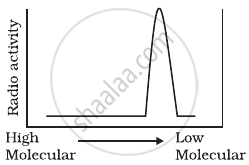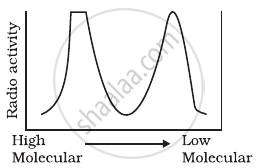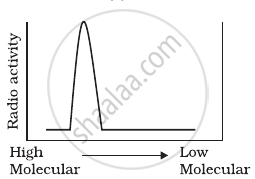Advertisements
Advertisements
Question
Replication was allowed to take place in the presence of radioactive deoxynucleotides precursors in E.coli that was a mutant for DNA ligase. Newly synthesised radioactive DNA was purified and strands were separated by denaturation. These were centrifuged using density gradient centrifugation. Which of the following would be a correct result?
Options
Solution

Explanation:
Let us assume that heavier nitrogen was used in this experiment. This nitrogen molecule from parent's cell would be transmitted equally in the daughter cells. Each daughter cell will have half of the DNA with heavier nitrogen and another half with lighter nitrogen.
In the F2 generation, 50% of daughter cells will have a combination of radioactive and non-radioactive DNAs. The rest 50% of daughter cells will have non-radioactive DNAs.
This is the reason why the graph shows two peaks with each peak representing a particular form of nitrogen in DNA.
APPEARS IN
RELATED QUESTIONS
The ________enzyme is used to cut DNA at specific point
(a) DNA polymerase
(b) Alkaline phosphatase
(c) restriction endonuclease
(d) DNA ligase
Give the types of blood proteins and human hormone’s produced by recombinant DNA-technique
Answer the following question.
Explain the mechanism of DNA replication with the help of a replication fork. What role does the enzyme ONA-ligase play in a DNA replication fork?
Give a reason why :
DNA cannot pass into a host cell through the cell membrane.
The following diagram represents an important concept in the genetic implication of DNA. Identify A, B and C.

Which of the following results prominently proved that DNA is the transforming material from the experiments carried out by Avery, Macleod, and McCarty by using various enzymes?
What would happen if we inject a mice with the mixture of heat killed S-type and living R-type?
A bacterium grown over medium having radioactive 35S incorporates radioactivity in ______.
A DNA with unequal nitrogen bases would most probably be ______.
Give reason: On injecting a mixture of heat-killed S-bacteria and live R-bacteria, the mice died.



